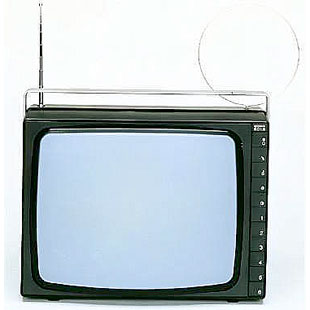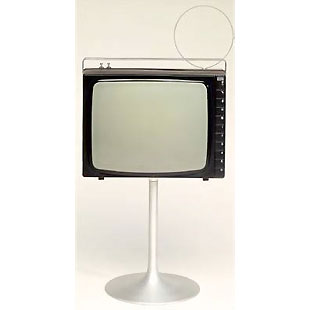BeoVision 600
Manufactured: 1970 - 1972
Designer: Henning Moldenhawer and David Lewis
Colours: Black or white
In 1970, a young designer, David Lewis, created one of the world’s first transportable TVs - Beovision 600 - long before small portable TVs became widespread. Beovision 600 was a black and white TV with a solid handle and weighed just over 13kg. Compared to the pocket-sized TVs of today, it could hardly be called portable. Nevertheless, it was transportable with a 44cm screen and excellent sound quality. The TV set won the iF Design Award in 1970.
Full transistorisation meant that sound and picture appeared at the press of a button, a new and unusual feature at the time. The cabinet was made of plastic and the handle was concealed when not in use. Six pre-set stations could be operated by one press of a button and all settings were concealed in small compartments to prevent inquisitive little fingers fiddling with them. It also featured a retractable flex.
All in all, a pioneering TV design which, in later years, was copied by many other TV manufacturers. Beovision 601 replaced its predecessor in 1973, fitted with several new features which were missed out on Beovision 600.
BeoVision 600 Product Specifications
Beovision 600 Specifications
Types:
3801 (1971 - Dec 1972)
GB 3805 (1971 - Dec 1972)
Picture tube: 44cm
Speaker: 1x 800-ohm oval speaker
Power supply: 220 V
Power consumption: 100 W
Power output: 5 W
Distortion: less than 1 % at 500 mW / 1000 Hz
Dimensions W x H x D: 43.4 x 33.2 x 30.8 cm
Weight: 13.1 kg
Related Products
Created: 15th December 2006
Modified: 17th May 2007
Author Notes:
Q.6 Never heavy, especially clad in disorganised Roman attire!







